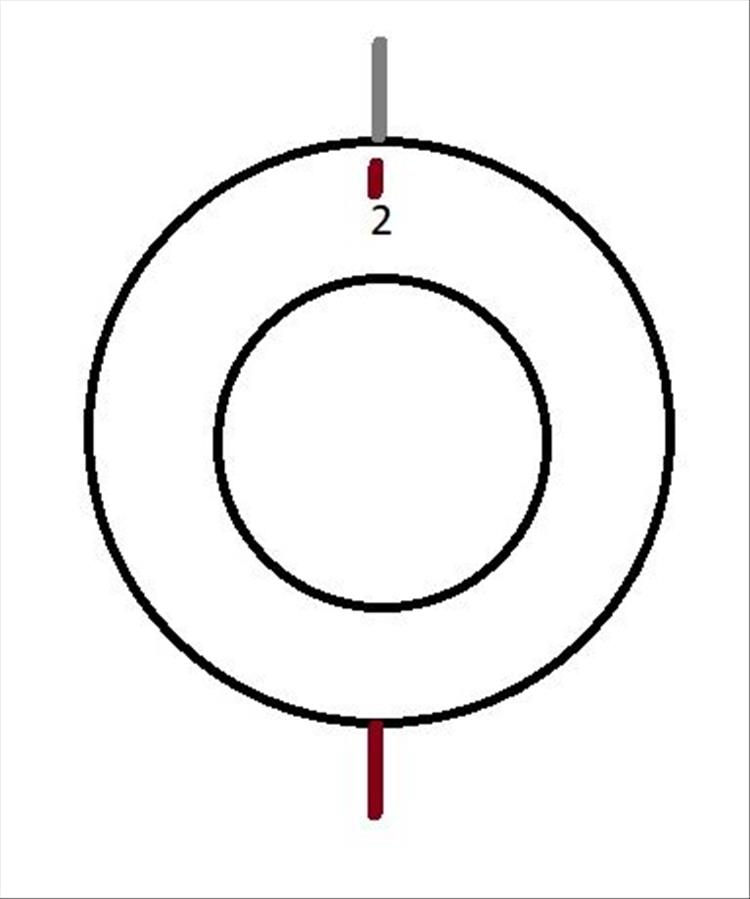Home
Repair And Restoration
Shameful Spannering
Job Date - 29 August 2022
By Ren Withnell
We stand on the shoulders of giants. The computing machine you're reading this on is the latest development in 10,000 years of human advances. We started out by planting seeds and tending them rather than foraging around in the hope of stumbling across food. We've ended up in a world where we can communicate easily around the globe and send robots to the very edge of the solar system and beyond. We're also capable of annihilating ourselves with minutes but let's not dwell on that too much.
We should learn from those that went before us and hopefully find out new things while we're here to pass to the next generation. We should also learn from the mistakes of others. History should help us to avoid future wars and create a society where everyone is valued. Regrettably history only teaches us we're doomed to repeat our mistakes.
Maybe you can change that and make the future a better place... by learning from my mistakes.
The manual says the "1" mark should line up with the notch at the top of the viewing window. The only problem is when the "1" mark is in line at the notch at the top of the viewing window - the number 1's rockers are tight and number 2's are open. This applies when the "2" mark is in line with the notch at the top of the viewing window... number 1 appears to be ready to adjust.

The manual suggests this is the correct position for setting number 2. It's wrong.
Well, you know. Maybe the cam sprocket is on upside down? Maybe this manual is for the '15 model and this is a '16? That'll be it.
My Mate's feeler gauges are odd. Damn things have "0.017 0.432". We're aiming for 0.17mm. Yeah that's the one then innit, them funny numbers will be thousands of an inch or summat.

Feeler gauges are fiddly things.
Set the tappets, put the rocker cover on, fight with getting the radiator back in, fill with water (for now) and start. It sounds like a washing machine filled with ball bearings.
Aaaah. Wait a minute. Hindsight is always 20-20. Hindsight is also very embarrassing too.
Piston 1 is *NOT* the one on the left side of the bike. No. Piston 1 is the one closest to the cam chain. With the cam chain on the right side piston 1 is on the right side. I do not know if this is a perpetual convention around the world and for every marque and model. The lesson here is to ensure you actually know which piston is piston 1 rather than assuming.
In my defence the camshaft on this model cannot be "seen" so I could not view the cam lobes to make a proper assessment.
"0.017 0.432" is not the same as 0.17 is it - note the extra zero. No, the tappets are set to almost half a millimetre not 0.17mm. I did think the metal in the feeler gauges was a little firmer than my own, I figured they were better quality. The lesson here is to ensure you actually understand the tools your are using.
Did you know doing things the second time around is a lot quicker? We already know what we're doing and putting the bike back together the second time goes swiftly. Did you know an engine runs a lot quieter when the tappets are set correctly? Funny that, can't imagine why.
Share your hard earned wisdom - click here.
Reader's Comments
Bogger said :-
I have never done any tappets ever tappets via the TDC method. I just watch the action of the valves whilst turning over by hand.
So when the inlet is down the exhaust must be up and therefore can be adjusted. Obviously the same can be said when the exhaust is down you adjust the inlet. Its never let me down yet.
I of course use the correct size feeler gauge as this helps enormously.
Bogger
31/08/2022 21:45:13 UTC
Ren - The Ed¹ said :-
I have often wondered. We are assuming a camshaft is as pictured below - a perfectly round section (coloured red) with an (orange) blob attached to it. Yes, of course I know this is cast and machined as one lump of metal. As such Bogger's suggestion is fine because anywhere off the lobe, lump, blobby bit, should be the same as anywhere else. So as long as we are at least 90 degrees off the top of the lobe we are good.
I have no reason to doubt this is correct. BUT. As proven above assumption is the mother of all messups. Are all camshafts perfectly round with a blob on? Is there a camshaft where the gaps MUST be measured in a certain position because the round bit is not entirely round? I await your wisdom on such matters.
 01/09/2022 07:56:29 UTC
01/09/2022 07:56:29 UTC
Upt'North ¹ said :-
The easy answer I spose is I dunno. But it would be 99.999% safe to presume that any difference would be negligible, if there was indeed any difference at all. So I would agree with that clever wee laddie, Bogger, that if we call the point that the lobe starts Point A and the point that the lobe ends Point B, it would be safe to take the reading between points B and A. In that order of course.
Although the inner nerd in me would definitely still return to the manufacturers manual recommended procedure. Or take it to Little Richie who is much more betterer than me.
Upt'North.
01/09/2022 09:38:24 UTC
Ian Soady¹ said :-
Camshafts don't always look like the picture. Some have what are called "quietening ramps" - in fact my Norton handbook has a different setting method for these, with the exhaust checked when the inlet has just closed and vice versa. I generally do adopt Bogger's method for other engines although with 4 cylinder engines the rule of 9 is useful - adjust the clearance for valve X where valve 9-X is fully open - eg for valve 3 when 6 is open. This of course is for 2 valve heads but the principle is the same for 3 or 4 valves / cylinder. Actually I'm not sure whether this works for engines not having a 1342 firing order.....
01/09/2022 10:40:19 UTC
ROD¹ said :-
Ian, I used the method of nine on my old BMC mini, but as you say the firing order needs to be 1342.
I now prefer to follow the manual, with engines becoming ever more complicated eg: variable valve timing ect.
01/09/2022 11:44:50 UTC
Bogger said :-
Ref camshafts being one piece of cast and machined metal.
I also thought this was the case for all camshafts. However about 18 months ago at work we had a 1.5 turbo diesel fiesta roll through the doors with a snapped cambelt. We checked it all over and fitted a new timing belt. It ran and ticked over at idle fine, but there was a distinct lack of performance. Hmm, valves must be bent. Head off, no bent valves. It turns out that the cam lobes are pressed into place onto the dead straight camshaft. The valves had touched the pistons but instead of bending had spun the cam lobe on the shaft on a couple of cylinders ever so slightly.
We could only tell this when we compared the new camshaft with the old one. to look at the camshaft it looked like a single piece of machine metal. You live and learn.
Bogger
01/09/2022 12:54:36 UTC
Ren - The Ed¹ said :-
Negligible Upt'? When you're dealing with 1/100th of a millimetre negligible seems a lot!
While I'm shocked Bogger, I'm equally not. It must be a complex machining process to produce an accurate camshaft from a solid blank which makes it expensive. Just pressing and/or gluing lobes into place makes a lot of sense. Hardening the lobes must be easier too. I'm sure its fine and in your instance it seems to have actually protected the valves and possibly the whole engine.
01/09/2022 14:25:53 UTC
ROD¹ said :-
Ren, cut us some slack with negligible clearances.
We are from a generation where a piece of a fag packet would set the spark plug gap, the contact breaker gap, and the valve clearance.
01/09/2022 17:13:45 UTC
Ian Soady¹ said :-
"It must be a complex machining process to produce an accurate camshaft from a solid blank " It isn't really that hard and with modern computer controlled machinery very easy. In fact they usually start as a casting (or forging in some cases) with the rough shape already there. The link is quite interesting.
https://www.onallcylinders.com/2018/07/09/camshaft-made-tour-summit-pro-ls-cams-...
01/09/2022 17:29:31 UTC
Upt'North ¹ said :-
What's a mm?
01/09/2022 18:31:58 UTC
Shuffling on said :-
Surely there is some bloke on utube doing it. That's where I found out how to do my interceptor. Sadly he didn't show me how to keep the rocker cover gasket in place when refitting the cover. Took longer to get it back on than the whole of the rest of the job.
I had an Opel years ago where you had to do the tappets with the engine running. You had to make a cover for the cam chain out of a biscuit tin but you still got a face full of oil when doing them.
01/09/2022 22:36:58 UTC
Ian Soady¹ said :-
"What's a mm?" .040"
02/09/2022 10:22:19 UTC
nab301 said :-
Bmw boxer engines have pressed on cam lobes
Nigel
03/09/2022 11:58:46 UTC
Ren - The Ed¹ said :-
It's no good I had to do some googling. It turns out the lobes are made as pictured below then pressed on to essentially round stock bar. Some versions are merely an interference fit, other versions are keyed or have splined shafts.
Having seen this I can see how the lobe can turn on the camshaft - if the lobe is in interference fit. Imagine then purchasing a second hand camshaft. Subject to not having some accurate measuring equipment and an engineer's drawing you'd have no chance of checking to see if the lobes have moved out of position a smidgeon.
 05/09/2022 14:00:11 UTC
05/09/2022 14:00:11 UTC
Name
Comment
Add a RELEVANT link (not required)
Upload an image (not required) -
Uploading...
Home
Repair And Restoration